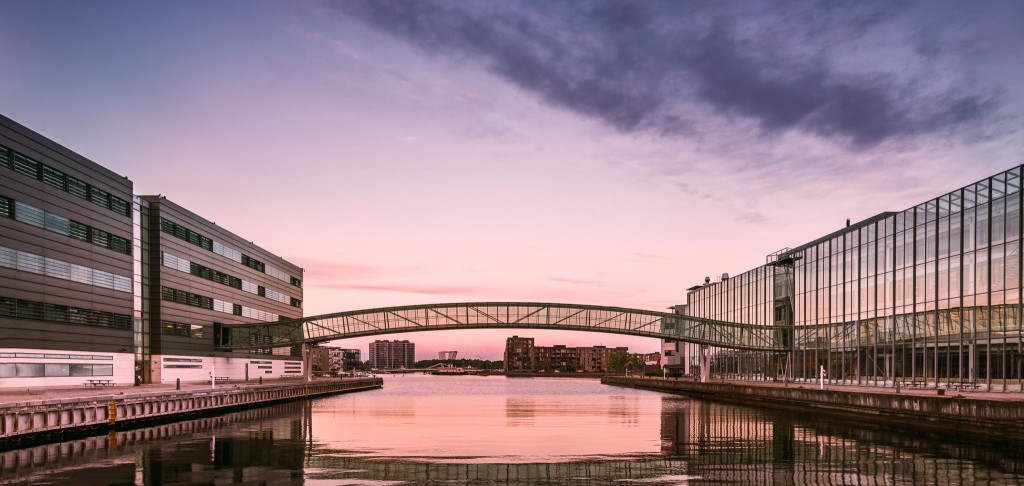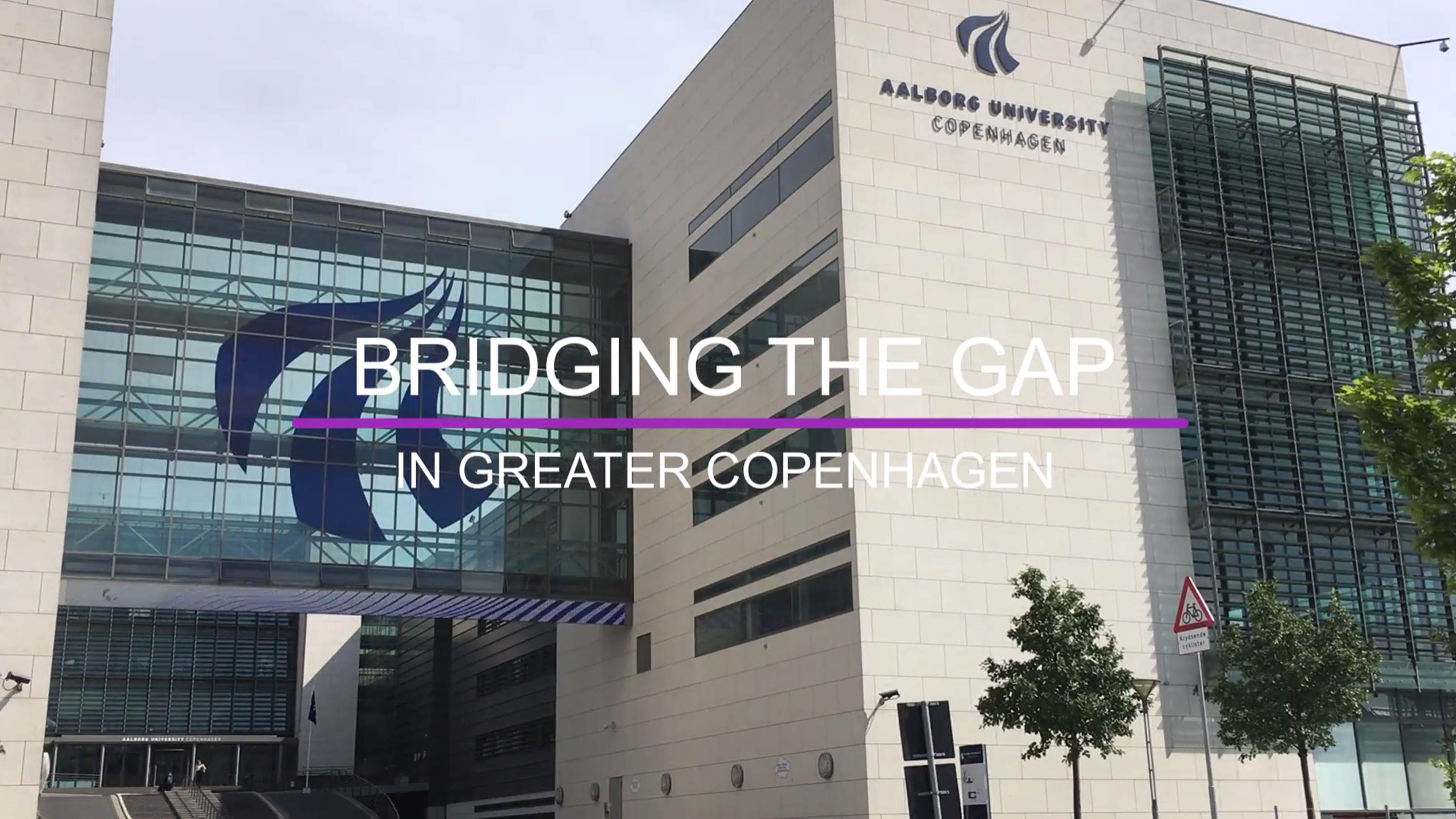
Aalborg University in Copenhagen, showing the bridge to the department for Architecture, Design & Media technology (to the right).
With cross-disciplinary competencies predicted to be in high demand in 2020, a new & timely study by Aalborg University in Copenhagen comprehensively maps the current gaps between the demand and supply in lighting related skills, as well as providing recommendations for how to narrow them.
Lighting the path for growth
Light has shown to have a significant impact on our daily lives in fields such as health, learning, work and general wellbeing. Training and knowledge of lighting is therefore becoming a more widely sought professional quality in Denmark and Sweden. The field of lighting is undergoing rapid development and is expanding to include an increasing number of disciplines – from technical and humanistic to artistic practices, on practical as well as theoretical levels. Furthermore, lighting infrastructure has been identified as the key enabler of the Smart City.
Previous research** estimates that the building industry, including architects and consulting engineers, will be responsible for 40% of green growth, with more than 11.000 fulltime jobs in Denmark, by 2035, worth 19,5 bill. DKK. This opens up a huge potential in jobs with lighting related competencies within energy and building alone.
Cutting edge skills for a world-leading living lab
To tap into this potential growth Lighting Metropolis is already tapping into this predicted growth with the ongoing construction of a world-leading living lab for intelligent lighting in Greater Copenhagen; a region already known for innovative collaborations and cutting edge skills in selected lighting areas such as human centric lighting. However, to keep pace with the rapid developments in the industry it is essential to identify and narrow other gaps too. Lighting Metropolis therefore commissioned Aalborg University in Copenhagen to map and analyse the present gaps between educational programs within a broad field of lighting and compared this ‘supply’ to the current ‘demand’ by employers in Denmark and Sweden, and subsequently lay a foundation for a comprehensive strategy for how to reduce the gaps between labour demand and the provision of education services in the lighting field.
Insights & findings
This new study both qualifies and expands previous research, as well as providing a finer mesh of detail regarding the needs for future educational programs.
Confirmation of previous findings:
• High demand for inter-disciplinary qualifications
• Lack of specialised lighting skills
Key insights and recommendations, from expert interviews:
• Lighting fields must learn how to work together
• No one can predict which light source the future holds
• Every lighting designer needs to consider all lighting fields
• Mentoring
• Collaborations
• Field trips
• Professional courses
Key insights and recommendations discussed in the focus group:
• Energy as the driver for lighting development is ending
• Human centric lighting is on the rise
• Evaluation of completed projects
• Industry and institutions must dare to invest in each other
• Teachers can bridge the sectors
• More focus in the future on sustainability and lifetime aspects, food production and amount of light in cities
• The city and home must be ‘smart’ and personal
A lighting designer’s complex world
To define the primary themes for the study, a broad range of competencies and categories were identified within the field of lighting, and validated by a focus group, consisting of 111 competencies across 8 categories (see the full list here).
This was followed by an extensive screening of educational programs in Denmark and Sweden, and industry players. The conducted surveys were based on 84 responses from the supply side and 92 from the demand side. To validate the results AAU interviewed 17 prominent European personalities in lighting. The quantitative results of the current situation in Denmark and Sweden combined with the qualitative findings from the expert interviews resulted in hypotheses both for the current situation, the immediate future and a 5-10 year perspective.
Specific fields with the widest gaps between supply & demand:
• Human centric lighting
• Luminaire design & evaluation
• Energy renovation (in lighting)
• Light planning
• Urban design
• Tender specifications
• Economy
• Public lighting
• Lighting concepts
• Calculation software
The lighting master plan
The following concluding recommendations are presented as important for educational institutions to note, towards generating research, knowledge and graduates who can meet the rapidly changing demands from the lighting industry and related fields:
• More interdisciplinary projects
• More projects with external partners
• Collaborations with public projects and internships at municipalities
• The lighting industry needs more knowledge of which competencies to demand, when hiring new employees.
• Students should be aware of their possibilities in the market. No one needs to be an expert on everything. Many respondents from the industry are in need of a little knowledge of everything, whereas huge companies need people that are specialised.
• Short courses for employee brush-up
• Student “master class” in reading and understanding required skills: standards, planning, legislation and other skills you that you don’t get familiar with in universities
• Economy is also an important parameter when leaving the academic world
Read the full report here (and the appendix here).
*Source: The Danish Technological Institute (2013), ‘Den Danske Ingeiør 2020’
**Source: Dansk Center for Lys (2012) ’Behov for lysuddannelse i Danmark’




